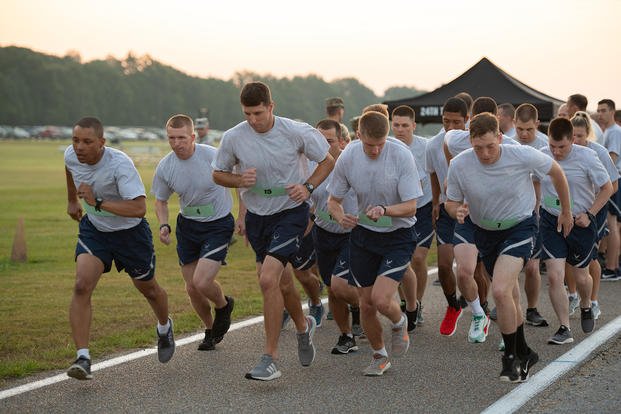Susi Traudt ran her first half-marathon a decade ago.
Since then, Traudt -- a senior airman in the Oregon Air National Guard -- has completed several other halves and progressed to marathons; distance relay races lasting a day or more; and even an ultramarathon.
But Traudt said she never knew what she was doing wrong until she met Mark Cucuzzella.
"It's totally reprogrammed how I run," she said.
Traudt was referring to the Air Force Efficient Running Project, an interactive online resource developed by Cucuzzella, a former lieutenant colonel in the Air Force Reserve. The website includes a series of short videos separated into three modules: one on the science behind efficient running, another geared toward airmen, and a third for providers or trainers.
While the project was designed for the Air Force, it's free for anyone, military or civilian. No registration is required.
"Think of an airplane," said Cucuzzella, a longtime competitive runner who has traveled to military bases to teach the concepts of efficient running. "You've got a chassis, an engine and then you've got how it moves through the air. You could have a super strong runner, but if they have really poor [efficiency] ... then you're going to have difficulty."
The Efficient Running Project pinpoints five key areas to develop good running form:
- Posture. Stand tall, straight and with a slight forward lean. Look ahead, not down.
- Core. Building strong abdominal muscles, hip stabilizers and glutes enables you to tap into energy from the ground more readily. Stay relaxed but firm.
- Arms. Use your arms and hands to help develop a smooth rhythm and counterbalance trunk rotation. Keep your elbows at a 90-degree angle or less. The main motion of your arms should be relaxed.
- Feet. Your feet should land close to your center of gravity, avoiding overstriding. The entire bottom of your foot should contact the ground, allowing you to maintain balance, limit shock and lessen the risk of injury.
- Cadence. The cadence, or step rate, ideally should approach 180 steps per minute. Try not to lift your leg up actively after each step, instead relying on a concept called elastic recoil, during which ground forces help propel your leg upward like a slingshot. Run with a light, springy step.
Reid Fisher, an associate professor of rehabilitation science at the University of the Incarnate Word in Texas, has consulted with Air Force trainees about running more efficiently during basic military training at nearby Joint Base San Antonio-Lackland.
"Our big piece has been core activation to get hip extension, to get glute activation; higher cadence; and landing close to the center of mass, where we have a flexed knee underneath," Fisher said.
The right shoes also are important. Traudt credits choosing the proper footwear -- more level shoes with less cushion are preferred over ones with too much padding in the heel, which can create an imbalance and overly stress the knees, hips and lower back -- with making the biggest difference in her running.
Another Oregon Air National Guard member, 1st Lt. Jared Boyer, felt the wear-and-tear of running before becoming familiar with the principles espoused by Cucuzzella four years ago.
"When I joined the Guard [11 years ago] and started to run more specifically, I realized there's an accumulation of injuries that I need to get over and I just couldn't," Boyer said. "I'd get from one injury, I'd go to the next injury, I'd go to the next injury and I was still physically capable to power through some of the hurdles."
Boyer knew there was a better way, though. According to the Efficient Running Project, most injuries result from runners pushing themselves too much, too soon, too hard or too fast. Poor technique, imbalances and improper shoes are other factors.
Some tips to help prevent injuries:
- Start slowly and progress gradually with any changes, allowing your body time to adjust.
- Learn to run in your aerobic heart-rate zone. Subtract your age from 220 to calculate your maximum heart rate. If your heart is beating consistently faster than that while running, the intensity is likely too high. You should be able to speak clearly while running.
- Consider altering your running routes, exposing yourself to different running environments and surfaces.
- Don't mask pain with medication or anti-inflammatories.
- Never stretch before running; warm up for 10-15 minutes with a walk or slow jog instead. Cool down or stretch after your workout.
Cucuzzella said trainees struggling with running should slow down.
"Don't put pain into your body," Cucuzzella said. "Don't embrace the suck, so 'no pain, thank you' would be my message. It should be relaxing, and this is really going to help you down range."
-- Stephen Ruiz can be reached at stephen.ruiz@monster.com.
Want to Learn More About Military Life?
Whether you're thinking of joining the military, looking for fitness and basic training tips, or keeping up with military life and benefits, Military.com has you covered. Subscribe to Military.com to have military news, updates and resources delivered directly to your inbox.
















